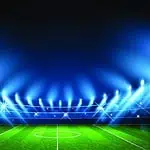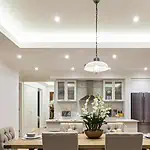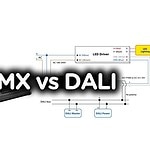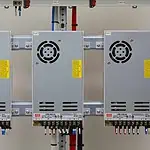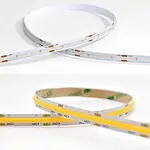Bay light brightens a vast section of the area with a spaced-out ceiling. The best examples to illustrate this phrase include commercial buildings, warehouses, etc.
However, bay lights can be broadly categorized into high and low ones.
A high light bay is defined as when the light source is used at a definite height of more than 20 feet from the floor.
Nonetheless, concerning the low bay lights, the illuminations of the light source are spread under a maximum height of 20 feet.
This type of elucidation can be seen in public buildings, homes, and so on.
High-bay Lighting Defined
The lighting fixtures generally used to illuminate a large area are known as high bay lights. These kinds of light fixtures are used to light in indoor locations like warehouses, factories, etc. In other terms, these kinds of lighting are in heavy-duty working spaces or projects—the light distribution of high bay fixtures is well distributed in every corner of the room.
High bay lights are primarily referred to because they can ensure the stretch of light to a vast area. Thus it also assists in proper and clear visibility of objects situated at a greater distance. However, it has a high lumen output which is the reason for observing the things located far away. High bay light fixtures are always placed at a higher distance which maintains the brightness of any specific area.
Low-bay Lighting Defined
Low bay lights are used at approximately 20 feet from the floor. The brightness and strength of any light source are distinctive. Soft bay lighting is generally below 100 watts. However, the brightness of the fixtures can also be determined where a person is using them.
However, these fixtures are hung with either hooks or chains as they are not directly settled in the canopies like the high bay lights. Moreover, this kind of lighting fixture spreads or reflects light but doesn’t provide the maximum brightness, and hence the visibility of objects placed at a greater distance is not clear.
Features & Characteristics
High-bay
- High-bay lighting comes as a low-maintenance lighting solution which means you’re not required to change the light soon or often, as it will last long. Moreover, you don’t have to waste money on maintenance.
- They’re an excellent solution to high-intensity lighting requirements. You can always rely on high-beam lights to light a large area with bright light.
- You don’t need to install too many lights when installing these lights in a large area.
- High-bay lights offer an improved lighting solution, enhancing the room’s vision and focus. This type of light eliminates impaired vision due to low lighting.
- Even though these lights have increased electricity consumption, they’re still worth it, corresponding to the amount of light they produce.
Low-bay
- Low-bay lights are perfect for small areas, which reduces overall product cost.
- They’re commonly found in most households and small warehouses.
- Low bay lights won’t add much to your electricity bills.
Applications
High-bay
- Airports
Airports are one of those areas where several crucial pieces of information outlets are pivoted at a higher height. For maximum visibility, the high bay lighting fixtures are used in this location. On the other hand, some other airlines also preferred a natural light source to eliminate the cost pressure. But it’s also important to point out this type of bay light, especially at night, to improve visibility as the working process continues 24×7.
- Factories
The height of a factory or any power plant is determined by the length of the types of machinery used in it. Sometimes the size of the ceilings goes over 20 feet. For such height, natural light won’t be applicable, and using high bay lights falls under necessity. The high bay lighting fixtures will maximize the visibility to a definite area.
- Outdoor Areas
High bays lighting fixtures can be used in several junctures of outdoor areas. It can be beneficial in the walking areas of local parks and so on. In the outdoor spaces, the highway lights fit out light to vast areas from more extended heights.
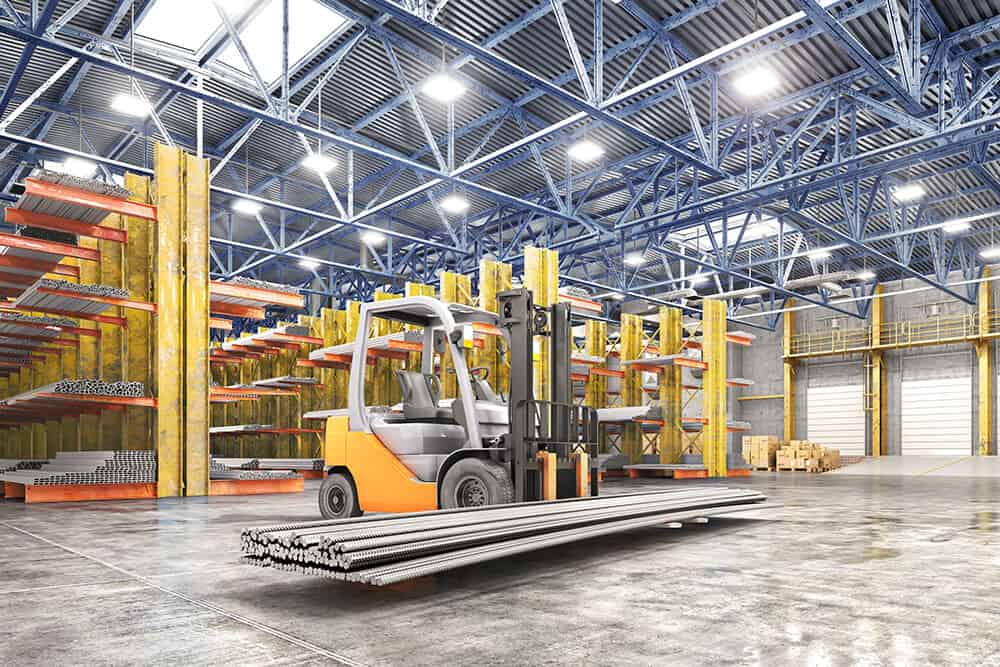
Low-bay
- Small Warehouses
Every shop owner, such as a retail store, departmental store, etc., has a small godown or warehouse to stock up the inventory. They need low bay lights since these lights are suited for small areas.
- Spice Kitchens
Restaurants and households need to stock up on raw materials for food preparation. Spice kitchens don’t need much light and don’t have high ceilings.
Pros & Cons
High-bay Lighting
Advantages
- Durability
The high bay lighting fixtures are highly durable and thus don’t cost too high for maintenance. Additionally, these are damage-proof and have long-term working assurance.
- Energy Saving
At present, people are opting for new technology lighting fixtures which can keep a significant control on energy efficiency. As a result, traditional lighting sources are getting replaced by advanced ones. Thus the high bay lights illuminate a large area and control energy consumption.
The high bay lighting fixtures reduce energy costs to a minimum extent. However, the cost can be controlled even more if the intelligent lights have been up with smart sensors.
- Light Uniformity
It doesn’t matter how often the high bay lighting sources are turned off or on. These won’t heat up efficiently as well as no such effect on the uniformity of light distribution will be faced.
- Visibility
Due to the uniform light distribution for the high bay lighting fixtures, the visibility from a certain distance will be evident because of the even distribution of light beams.
- Life Span
The high bay lighting fixtures can be used or work at least ten times more than fluorescent bulbs or any other lighting object because it emits less heat and thus can be considered defensible for reducing the cooling cost of the lighting fixture.
Disadvantages
- High Installation Cost
The installation cost of high bay lights can be higher compared to the entire installation procedure of other lighting fixtures. Specifically, the cost can exceed 2-3 times more than different lighting setups.
- High Repairing Cost
Cheap quality lighting fixtures can quickly lose their brightening effect. Nonetheless, the repair cost will exceed the expense of returning the brighter motion. So it’s better to get new ones without incorporating any idea about repairing them.
- Sometimes Get Dim Early
The quality of the high bay lighting conveys its longevity. Poor-quality lighting sources lose their illuminations effect very shortly. That’s why it’s significant to look into the manufacturer and other details of the high bay lighting fixtures before grabbing it.
Low-bay Lighting
Advantages
- Lighting Quality
The lighting quality of any of the bay lighting can be determined in terms of several degrees, like lumen output, color rendering, and color temperature. However, the low bay lighting fixtures have more excellent qualities concerning the above points, which makes the soft bay lighting diverse.
- Lifespan And Cost Effective
The low bay lighting has a longer lifespan and is much more cost-effective. Nonetheless, these lighting sources don’t dim within a short duration and are affordable.
- Performance
The audience widely accepts the performance of the low bay lighting. However, this lighting source utilizes infrequent watts and thus initiates the production of more lumens. At a low price range, the audience fetches an effective product.
- Heat emission
The low bay lighting fixtures don’t emit a substantial amount of heat. During operation, they don’t provide undesirable warmth in the room.
Disadvantages
- Low lumen output
Low bay lighting has a low lumen output as the distance from the ceiling to the floor is much smaller. Concerning this, the visibility, as well as the illumination, is not relevant. If the lumen output is nominal, then the brightness of the lighting source will also be insufficient. That’s why incorporating low bay lights are not preferred in large areas.
- Less area coverage
Low bay fixtures can radiate ceilings at a maximum height of 20 feet which indicates that they can’t illuminate a wide area. Nonetheless, low-lumen output contributes a lot in this context. Low bay lighting can’t compensate for the visibility of an outdoor or large site.
- Low lens angles
The lens angles of this kind of bay are low because of differences in stature from the high bay. On the same note, the height difference also plays a strong character in light placement and illumination of the bay light. However, the reflectors don’t get the opportunity to spread into a wide area and hand over visibility.
- Fewer watts
Generally, the low bay fixtures are below 100 watts. Watts indicate the power capacity of consumption of the light source. If the wattage power is low, then the power capacity will also be deficient and may compel damage to some elements of the product.
High-bay Vs. Low-bay: Key Differences
Several characteristics make some fundamental differences between high and low bay lighting. Such features are:
- Installation Height
The high bay lights can illuminate ceiling spaces of around 20 feet to 40 feet or more than that. On the other hand, the low bay lights can provide light between 12 feet to 20 feet of height from the floor.
- Beam Angle
High bay lighting utilizes three beam angles 60°, 90°, and 120°. Whereas low bay lights only have only one beam angle of 120°. Concerning the high bay lighting in a high lux level formed after a narrow beam transformed into a more focused one. In low bay lighting, the rays spread to a definite group. The beam angles of quiet bay lightning enhance the illumination of a particular place.
- Application
High bay lights are found in storage facilities, warehouses, school and university gymnasiums, airport hangars, etc. However, low bay lights can be found in locations of frozen storage, retail source, gas station, restaurants, and many more.
- Lumen output
The lumen output is generally low in terms of lower lights because they look after providing less light. From the basic definition, it’s pretty evident that low bay lights can’t use more lumens. But the opposite situation arises concerning the high bay lighting. However, this situation happens because the high bay lighting has to reach a wide area.
- Mounting
The high bay lighting fixtures are turned into pendants using hooks. Specifically, it can be fixed using hooks in the ceilings. These lightings can provide vertical lighting to the floor. Nevertheless, these specialties are not so established in low bay lights.
How To Choose The Right Bay Lighting?
When installing lighting at your premises, please consider the following factors to determine if you need high bay or low bay lights.
- Width Concerning The Beam Length
Before considering the width, the height of the light fixtures should match any of the beam angles. For the high bay lighting fixtures, the beam angles should be 60°, 90°, or 120°. However, for the low bay lighting, an intense beam angle of 120° is considered.
After gaining knowledge of the beam angle, the beam width can be easily calculated. The analysis beam angle x 0.0.18 x distance from the light bulb should be evaluated.
- Mounting Variations
Slip filters and straight arms are some mounting variations. Before creating the entire setup and lighting idea, you need to pick out the correct mounting prospect. Along with this, one should also have to choose the distribution pattern of the lighting source. Among all the types, Type III is considered the best for parking areas and roads, whereas Type V can spread light to a vast area.
- Retrofitting
LEDs are mainly associated with retrofitting kits. The entire kit consists of trunnions, slip fitter brackets, and some essential additional elements with an arm. These kits are one of those tricks through which you can save money at any time.
- Color Temperature
For maximum visibility of the objects, it’s essential to choose the correct color temperature for a particular corner. Warmer colors are expressed as the most comforting tone, whereas the blue color tone is used to enhance visibility.
- Reform
The shape or the structure of the lighting fixture should be contemplated because it can clarify how it will provide light. Generally, round lights are used to brighten large areas, and rectangular lights are preferred for extended workbenches.
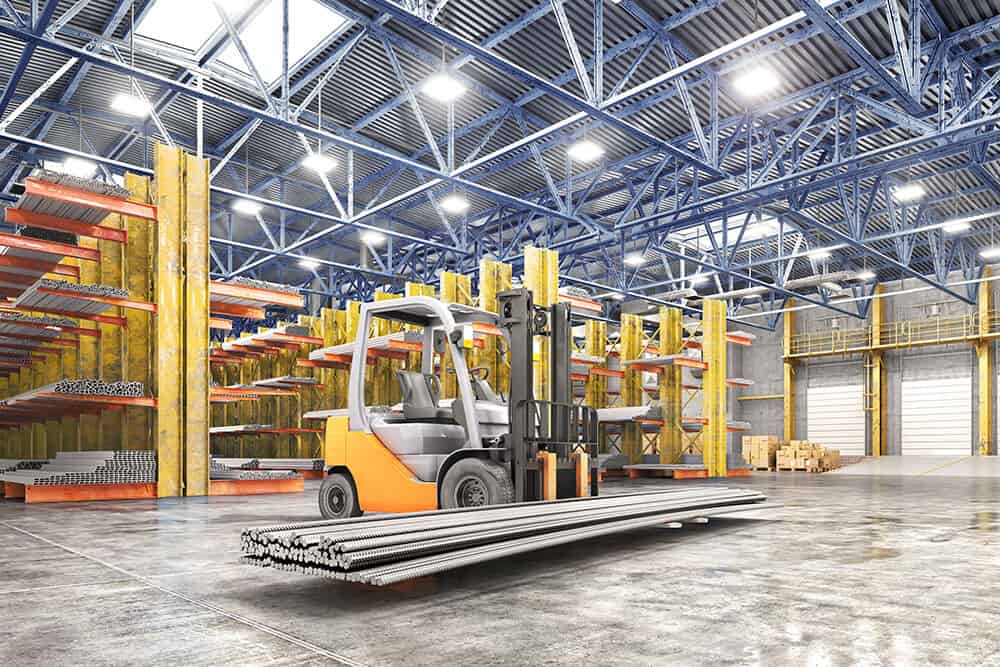
- Choosing The Best Between LED And Fluorescent Bulbs
Primarily the user needs to choose which type of lighting he wants to consider. However, for a very long time, there was a great conflict between LED and fluorescent bulbs. But after the advancement in the working procedure, LED bulbs have overpowered fluorescent bulbs.
The upgradation of LEDs has covered a vast portion of the market, as a result of which the audience has accepted it widely. Nonetheless, LED bulbs have 25 times extended longevity, as well as consuming almost 75% less energy than standard fluorescent lamps.
More information, you can read Halogen vs. LED Bulbs: How To Choose?
- Power Capacity
Sometimes the power capacity of the bulb is not enough to provide brightness to a specific space. However, to get the maximum illumination, it’s essential to have a power capacity of 130 lumens per watt.
- Preferring Between High and Low Bay Lighting
After looking at the appropriate height of the ceiling, the correct determination of bay light can be found. After noting down the size correctly, the referred bay light can be specified. For covering up a large or wide area, high bay lighting should be taken into consideration.
Before taking such steps, it’s essential to measure the height of the ceiling from the floor. For opting for high bay lighting, the size should be 20 to 40 feet from the floor, and for low bay lighting, the lighting height should be 12 to 20 feet from the floor.
FAQs
People believe expensive LEDs don’t emit heat, just like an incandescent lamp. Well, this concept is unacceptable. LED high bay lights tend to get hit as it generates heat. This entire procedure takes place while light energy is converted into heat energy. However, the new technology LEDs produce heat but at a safer quality.
The high bay LED lights can last quite a long time compared to traditional incandescent bulbs. Usually, incandescent light bulbs stay for around 1,000 hours, whereas LED lights can last for 50,000 hours. It can also be stated that after installing LEDs, the user doesn’t have to think about switching them for at least 20 years.
For high illumination, the wattage range of high bay lights can fall under the scope of 280 to 360 Watts. Light under this range will provide maximum brightness and work on energy efficiency and consumption. Some notable choices of high bay lights include 100 watts, 150 watts, 240 watts, and sometimes 300 watts.
The height determines the lumens of a high bay light. For 10 to 15 feet, approximately 10,000 to 15,000 lumens are required. However, the requirement of lumens will increase efficiently according to the elevation of the lighting source from the floor.
It isn’t apparent how many one needs for his room. The easiest way to note it down is to multiply the room’s square footage by the footcandle requirement. If 100 square feet is the exact size of the living room, then it will need 20-foot candles along with 2,000 lumens. Moreover, the calculation depicts the accurate lighting junctures one should evaluate.
The new technology high bay lights are dimmable. These varieties of lights can be dimmed easily from 10% to 100%. However, this can be accomplished by considering 1-10V or 0-10V dimmers connected to the dimming wires. These wires are set down easily with the low-voltage LED Dimmer Switch.
Yes, one can easily mount surface high bay lights. The light source can be hung at the hook attached to the ceiling. Then the required power cord should get connected to the power wide of the light source. Nonetheless, after joining each wire properly, it’s essential to have a precise notion of the brightness of the light source.
Conclusion
Bay lights are used to illuminate a wide area. These kinds of lighting fixtures can be easily installed in any indoor or outdoor space. However, to figure out which type of bay light will be suitable, it’s essential to jot down the distance of the ceiling from the floor. After knowing the numerical value, the correct type of bay lighting can be installed without any second thought.
The crucial segments of the content illustrate cover all the verges of high and low bay lights. Additionally, the typical questions which can effortlessly arise in a user’s mind are also elaborated to provide all possible ideas to them.
LEDYi manufactures high-quality LED strips and LED neon flex. All of our products go through high-tech laboratories to ensure the utmost quality. Besides, we offer customizable options on our LED strips and neon flex. So, for premium LED strip and LED neon flex, contact LEDYi ASAP!
